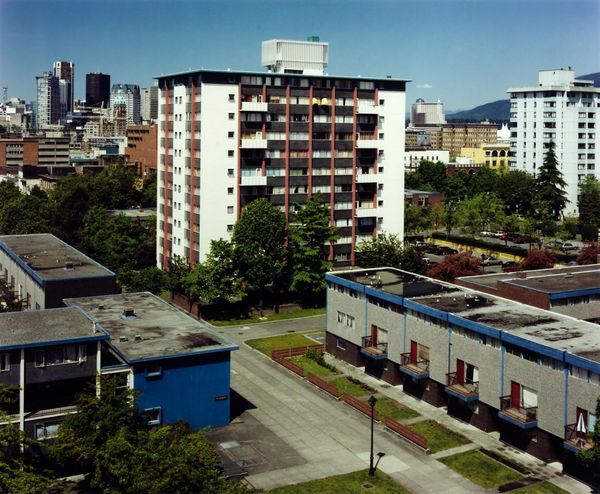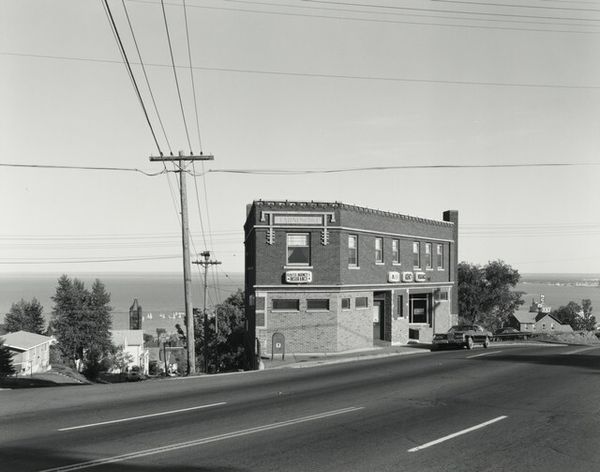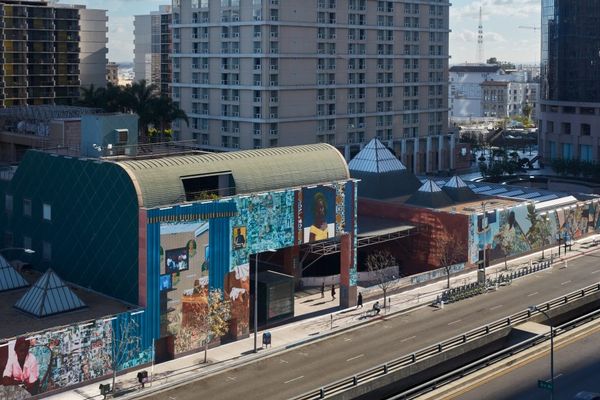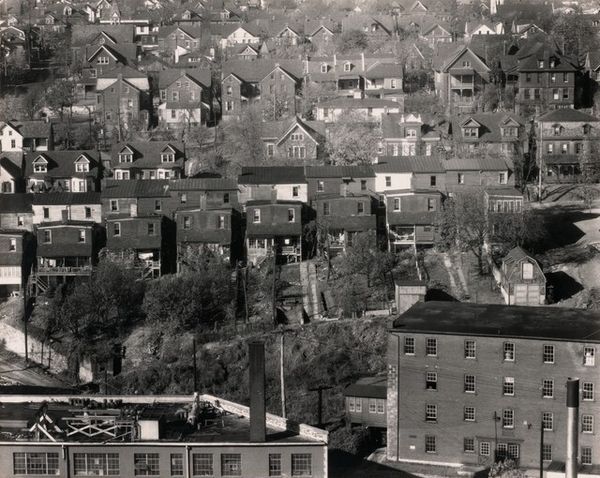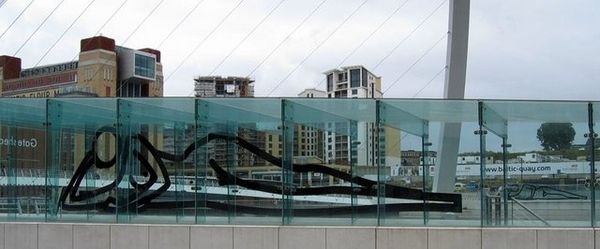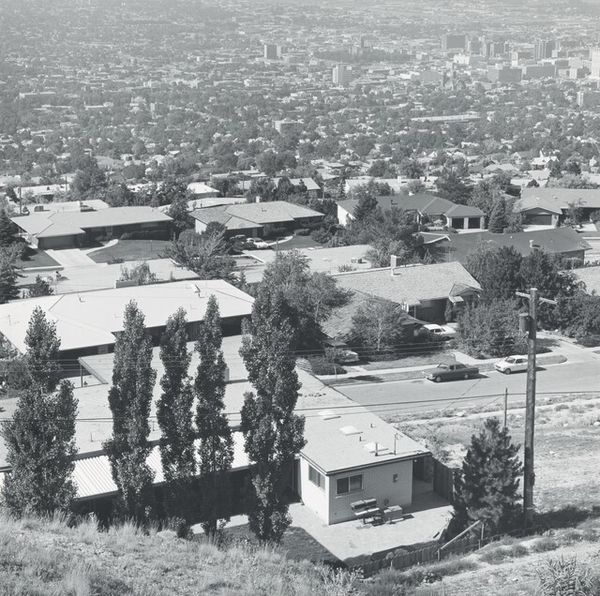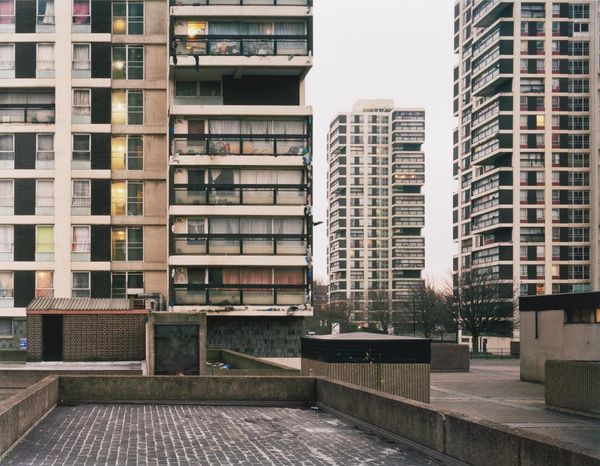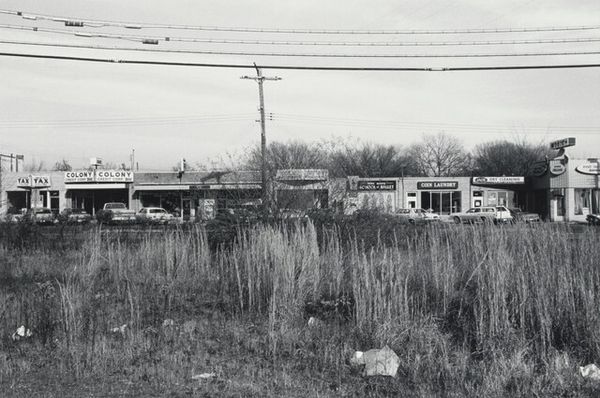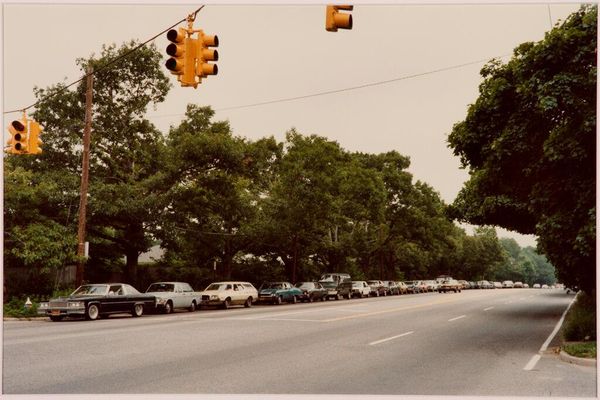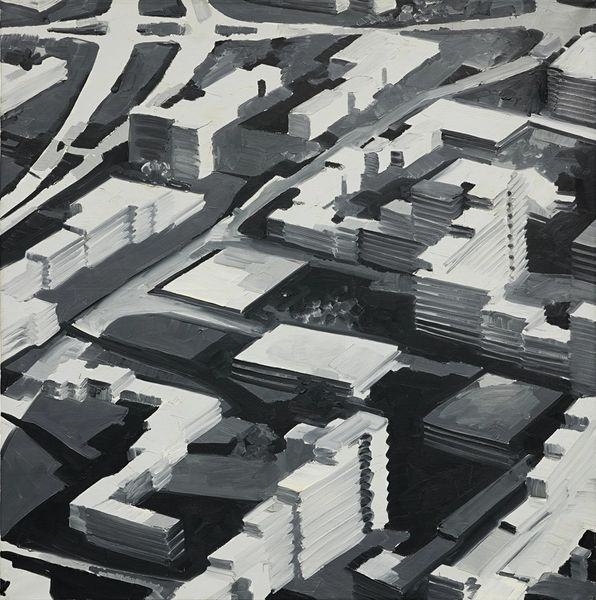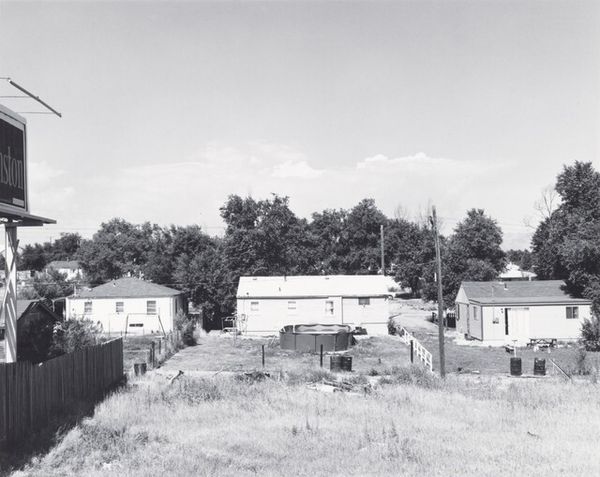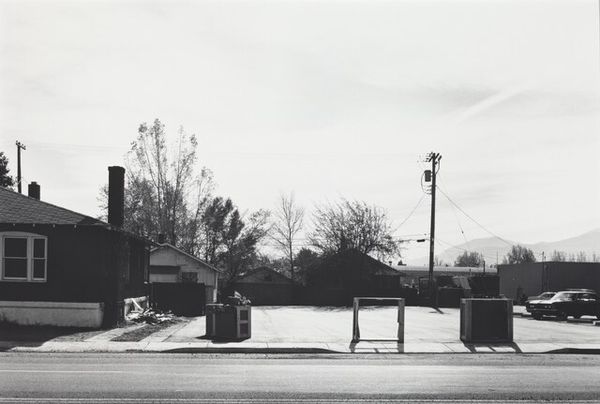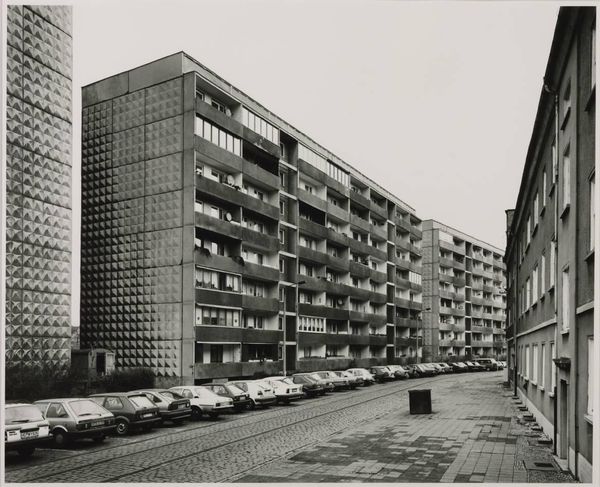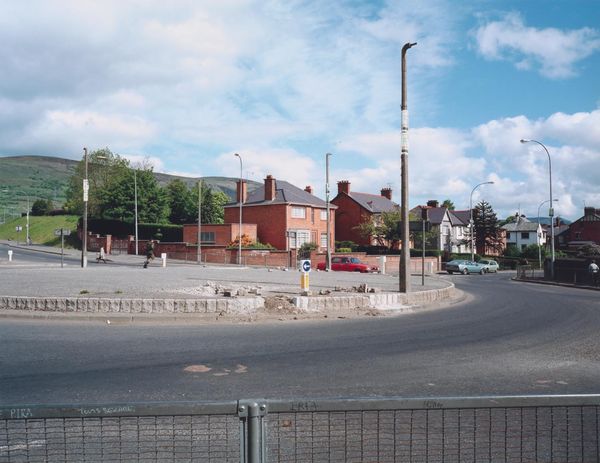
Dimensions: image: 540 x 990 mm
Copyright: © Stan Douglas, courtesy David Zwirner, New York | CC-BY-NC-ND 4.0 DEED, Photo: Tate
Editor: Stan Douglas's "McLean Park and False Creek" offers a fascinating view, almost like looking at a diorama. It feels so still and composed. How do you interpret this work? Curator: It seems to me that Douglas is interested in the layers of history embedded in urban landscapes. Notice the stark contrast between the older, low-rise buildings and the modern towers in the background. What do these visual cues suggest about societal shifts or memories to you? Editor: I suppose the old versus new highlights the passage of time and the cycles of urban development. Curator: Precisely. The image is not just a snapshot, but a carefully constructed narrative about Vancouver’s evolution. It invites us to reflect on what is gained and lost in the process of progress. Editor: That's a great point, I never looked at it that way. Curator: And that's exactly the power of images. They hold and pass on shared memories.
Comments
tate 6 months ago
⋮
http://www.tate.org.uk/art/artworks/douglas-mclean-park-and-false-creek-p78415
Join the conversation
Join millions of artists and users on Artera today and experience the ultimate creative platform.
tate 6 months ago
⋮
This series of photographs was produced by Douglas to accompany the video installation Win, Place or Show (Tate T07700) and the triptych Untitled (Set for Win Place or Show: East View, West View, Overview) (Tate P78413). The series of photographs show the area of Vancouver known as Strathcona, where the video is set, although as it exists today rather than in 1968 when the action in the video purports to take place. This district forms the context for Douglas's video installation and is visible in the video installation as a rain-soaked cityscape that the characters view from their window in the apartment block. Paradoxically, at this moment the view is hardly distinguishable from any number of cityscapes. Stan Douglas was born in Vancouver in 1960 and this series of views of the city indicate his awareness of local contexts on which the impact of official histories and political programmes are evident. The redevelopment scheme for this district, first proposed in 1950, was partially completed during the following two decades. In 1968, however, further stages of the project were halted by the intervention of local residents and urban activists. The photographs reveal the completed parts of the redevelopment project, including the apartment buildings Stamps Place and McLean Park, as well as elements of the preserved old district such as the Russian Orthodox Church. Further Reading Lynne Cooke, Sianne Ngai, Nancy Shaw and Neville Wakefield, Double Vision: Stan Douglas and Douglas Gordon, exhibition catalogue, Dia Center for Art, New York 2000Diana Augaitis, George Wagner and William Wood, Stan Douglas, exhibition catalogue, Vancouver Art Gallery, Vancouver and Foundation for Contemporary Art, Tilburg 1999, reproduced pp. 95-97, 99-101 in colourCarol J Glover, Diana Thater and Scott Watson, Stan Douglas, London 1998 Tanya BarsonFebruary 2001
